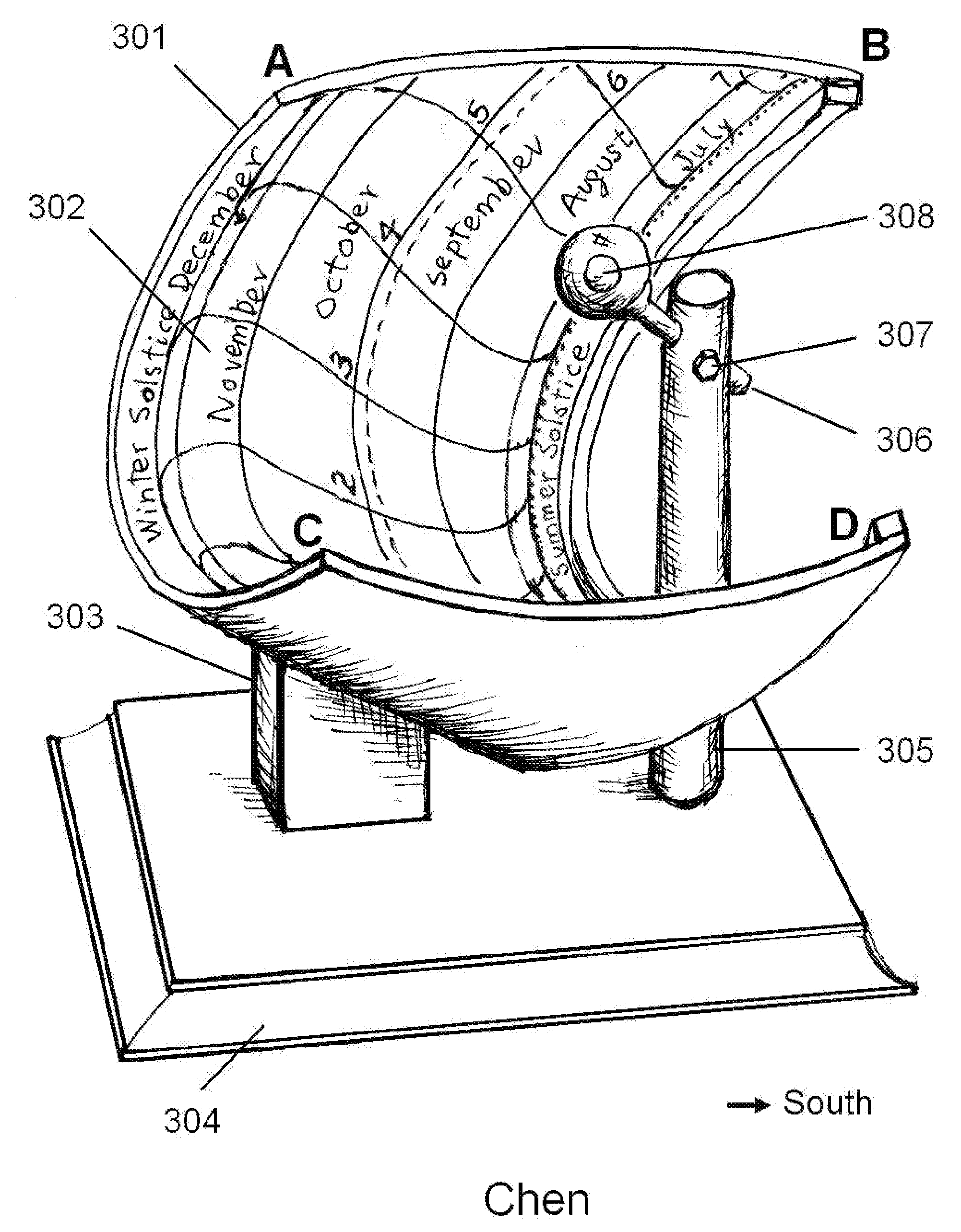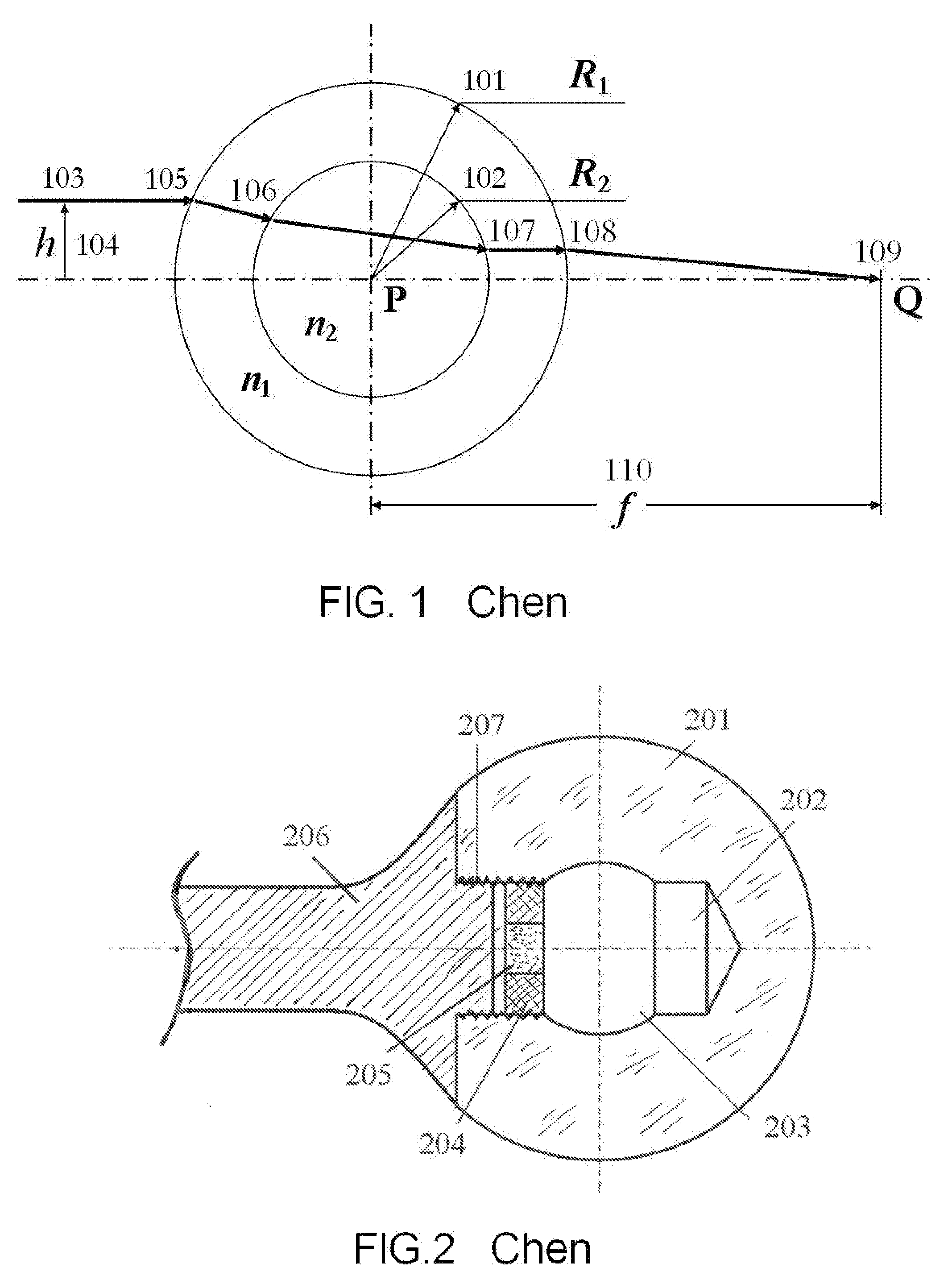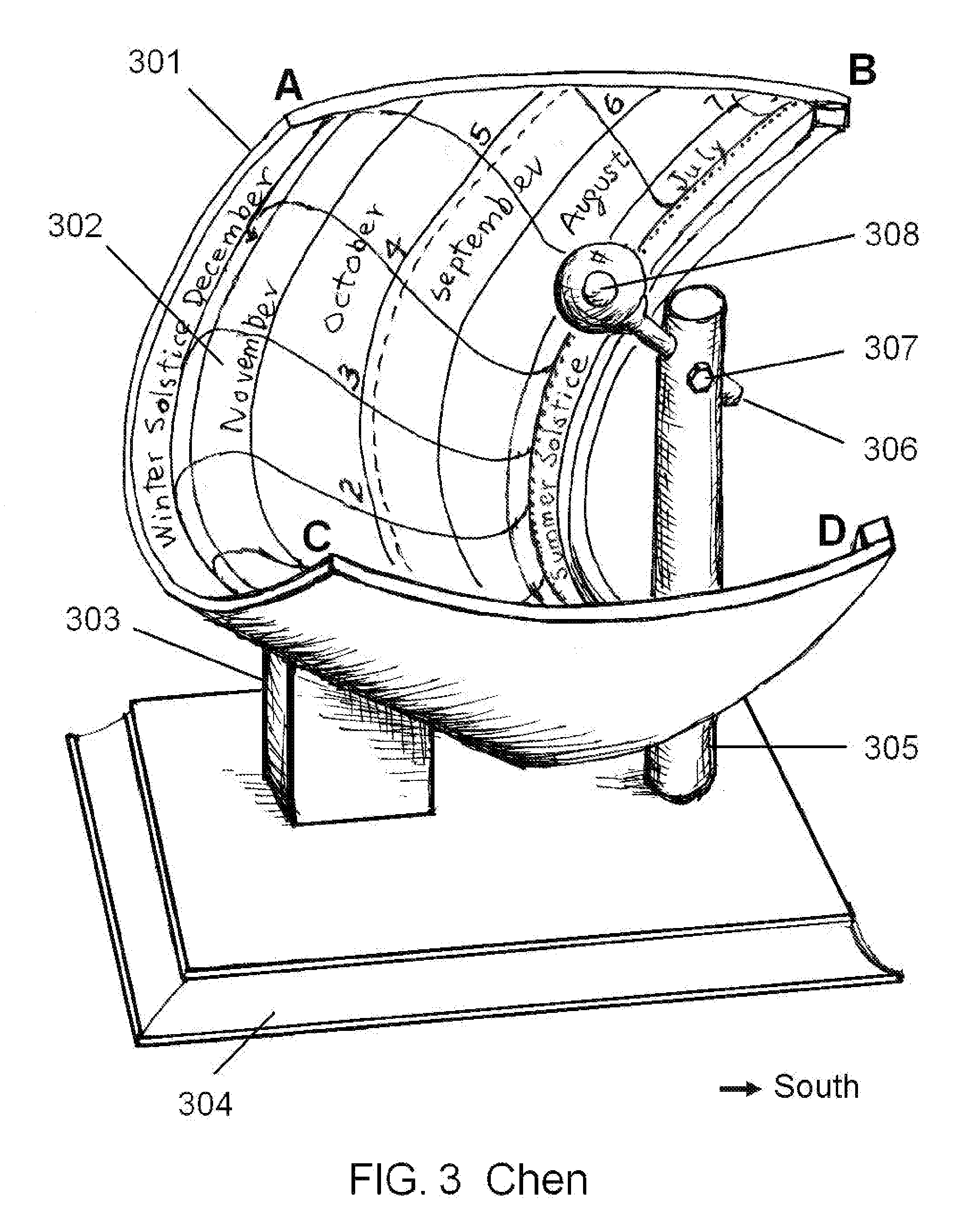Omni-directional Lens in Sundials and Solar Compasses
- Summary
- Abstract
- Description
- Claims
- Application Information
AI Technical Summary
Benefits of technology
Problems solved by technology
Method used
Image
Examples
Embodiment Construction
[0019]The principle of the omni-directional lens is shown in FIG.1. It is a sphere comprises two concentric components. The outer sphere 101 with radius R1 is made of a transparent material with index of refraction n1. The inner sphere 102 with radius R2 is made of another transparent material of index of refraction n2. When a light beam 103 impinges on the lens with an offset h from the axis, owing to the difference in the index of refraction, the beam is refracted four times on the four surfaces, 105, 106, 107, and 108. Detailed mathematical analysis shows that under the conditions n1>n2 and
R2R1>n1-n2(n1-1)n2,
all rays with the same h will converge at a point Q (109) on the axis with a finite distance f (110) from the center of the sphere P. In general, for rays with different h, the focal length f is different. Since the rays with the same offset h converge at the same spot at the axis, it creates a light spot with very high intensity. However, all the rays with different h will b...
PUM
 Login to View More
Login to View More Abstract
Description
Claims
Application Information
 Login to View More
Login to View More - R&D
- Intellectual Property
- Life Sciences
- Materials
- Tech Scout
- Unparalleled Data Quality
- Higher Quality Content
- 60% Fewer Hallucinations
Browse by: Latest US Patents, China's latest patents, Technical Efficacy Thesaurus, Application Domain, Technology Topic, Popular Technical Reports.
© 2025 PatSnap. All rights reserved.Legal|Privacy policy|Modern Slavery Act Transparency Statement|Sitemap|About US| Contact US: help@patsnap.com



